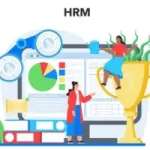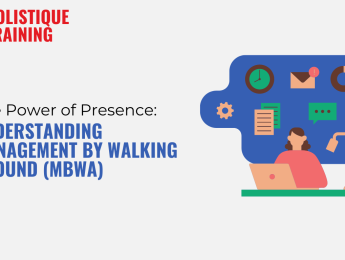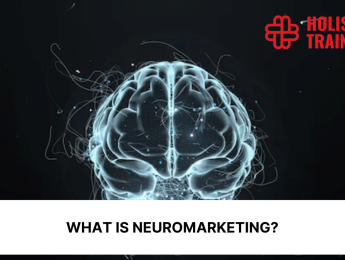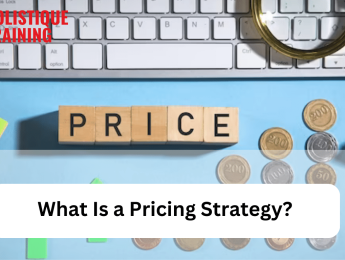- Table of Contents
- Introduction
- What Is HR Governance?
- The Two Components of HR Governance
- 1. Strategic Component
- 2. Operational Component
- What Are the Four Pillars of HR Governance?
- 1- Policy Development and Implementation
- 2- Risk Management
- 3- Compliance and Ethics
- 4- Performance Monitoring and Improvement
- Why Is HR Governance Important?
- Strategic Alignment
- Risk Mitigation
- Compliance and Ethical Practices
- Operational Efficiency
- Steps to Foster Good Governance in HR
- 1- Establish Clear Policies
- 2- Regular Training and Development
- 3- Create a Culture of Compliance
- 4- Implement Robust Risk Management Processes
- 5- Performance Monitoring and Continuous Improvement
- Key Resources to Help Implement Effective HR Governance
- a) Industry Associations and Networks
- b) Legal and Compliance Experts
- c) Technology Solutions
- d) Training and Development Programs
- e) Consulting Services
- f) HR Governance Framework Templates
- Conclusion
Introduction
Navigating an organisation's intricate human resources landscape requires a robust framework to ensure fairness, compliance, and strategic alignment. This is where HR Governance steps into the spotlight, serving as the compass that directs the course of an organisation's human capital management. In this comprehensive guide, we'll delve into the essence of HR Governance, exploring its components, the pillars that uphold it, and the crucial role it plays in shaping a company's destiny.
What Is HR Governance?
At its core, HR Governance refers to the set of policies, practices, and structures that guide and oversee the management of an organisation's human resources. Unlike traditional HR management, HR Governance transcends day-to-day operations, focusing on strategic alignment, risk mitigation, and ensuring ethical practices throughout the employment lifecycle.
The Two Components of HR Governance
Within the intricate tapestry of HR Governance, a duality emerges, giving rise to two indispensable components shaping the essence of how an organisation manages its human resources. These components, strategic and operational, function in tandem, weaving a comprehensive framework that addresses the day-to-day intricacies of HR and aligns the workforce with the organisation's broader objectives.
1. Strategic Component
At the helm of HR Governance stands its strategic component, a visionary force that seeks to align human resource practices with the organisation's overarching goals and objectives. This is not a mere exercise in synchronisation but a deliberate effort to position the workforce as a strategic asset, a catalyst for organisational success.
Strategic Workforce Planning
The strategic aspect involves forecasting future talent needs based on the organisation's long-term goals. This requires an in-depth understanding of the business landscape, industry trends, and an anticipation of skill requirements. By aligning HR strategies with organisational objectives, companies can ensure they have the right talent in the right place at the right time.
Talent Management and Development
This component extends beyond recruitment and involves the holistic management and development of talent. It encompasses succession planning, leadership development, and initiatives that nurture a culture of continuous learning. Strategic talent management ensures that the workforce has the skills and capabilities needed to drive the organisation forward.
Strategic HR Metrics and Analytics
Organisations leverage advanced metrics and analytics to measure the effectiveness of HR strategies. This involves tracking key performance indicators (KPIs) related to employee productivity, engagement, and retention. By collecting and analysing data, HR professionals gain insights that inform strategic decisions and drive continuous improvement. In essence, the strategic component of HR Governance elevates human resources from a mere support function to a proactive force that contributes directly to achieving organisational objectives.
2. Operational Component
While the strategic component sets the direction, the operational facet of HR Governance is the machinery that ensures the seamless execution of policies and practices. The day-to-day engine powers HR functions, maintaining compliance, fairness, and efficiency across the employment lifecycle.
Policy Development and Implementation
Developing clear and comprehensive HR policies is at the core of the operational component. These policies cover many areas, including recruitment, compensation, benefits, performance management, and employee relations. The key lies not only in creating these policies but in their consistent and fair implementation across all levels of the organisation.
Compliance and Legal Adherence
The operational side of HR Governance is intricately linked with legal compliance. HR professionals must stay abreast of labour laws, regulations, and industry standards to ensure organisational practices adhere to legal requirements. This involves crafting policies that comply with the law and monitoring and adapting to legislative changes.
Efficient HR Processes
Streamlining HR processes is a cornerstone of the operational component. Efficiency is key to onboarding, offboarding, payroll processing, and performance appraisals. Implementing technology solutions, standardising workflows, and ensuring clear communication channels contribute to the operational excellence of HR Governance.
In summary, the operational component of HR Governance is the backbone of the framework, ensuring that the strategic vision is translated into actionable practices. It emphasises the meticulous implementation of policies, compliance with legal standards, and optimising day-to-day HR operations. Together, these two components create a dynamic and cohesive HR Governance framework, positioning the organisation for sustained success in the ever-evolving landscape of modern business.
What Are the Four Pillars of HR Governance?
Organisations must reinforce a robust HR governance framework with four essential pillars, each pivotal in shaping the culture and efficacy of human resource management.
1- Policy Development and Implementation
The first pillar involves more than just creating policies; it's about crafting a living, breathing document that reflects the organisation's values and commitments. This dynamic approach ensures that policies evolve alongside the business landscape, adapting to new challenges and opportunities while maintaining a foundation of fairness and consistency.
2- Risk Management
Beyond risk mitigation, this pillar is the guardian of organisational resilience. It's about fostering a proactive approach to potential challenges, anticipating changes in the regulatory environment, and building a risk-aware culture where HR professionals become adept at navigating uncertainties, steering the organisation clear of potential pitfalls.

3- Compliance and Ethics
As the moral compass of HR Governance, this pillar extends beyond regulatory adherence. It encapsulates the organisation's dedication to ethical behaviour, emphasising the importance of integrity, transparency, and social responsibility. By weaving ethical considerations into the fabric of HR practices, organisations stay compliant and earn the trust and respect of their workforce and stakeholders.
4- Performance Monitoring and Improvement
Beyond the metrics and evaluations, this pillar is the driving force behind organisational agility. It's about fostering a culture where continuous improvement is not a buzzword but a way of life. Statistics show that a whopping 98% of organisations recognise the critical importance of performance management programs. By encouraging feedback loops, learning from successes and failures, and adapting swiftly to change, HR Governance becomes a catalyst for an ever-evolving, high-performance workplace. In essence, these four pillars do more than support the structure of HR Governance; they are the bedrock upon which a resilient, ethically grounded, and strategically aligned organisation is built.
Why Is HR Governance Important?
Effective HR Governance is not just a bureaucratic necessity but the key to unlocking organisational success. Here's why it holds such paramount importance:
Strategic Alignment
HR Governance's significance lies in its role in strategic alignment. Synchronising human resource practices with the overarching organisational strategy transforms the workforce from a passive entity into an active contributor to achieving business objectives. This strategic alignment ensures that the organisation harnesses its human capital as a dynamic and strategic asset.
Risk Mitigation
HR Governance serves as a shield against the multitude of risks associated with human resources. From legal compliance to financial prudence, the framework identifies, assesses, and mitigates potential risks, safeguarding the organisation from legal entanglements, financial setbacks, and reputational damage. It fortifies the organisational structure, creating a resilient foundation that can weather uncertainties.
Compliance and Ethical Practices
Beyond the regulatory checkboxes, HR Governance is the custodian of organisational ethics. It ensures that the organisation operates within the bounds of legal requirements and ethical standards. This protects the organisation from legal repercussions and fosters a culture of integrity and transparency, which is crucial for building trust among employees, stakeholders, and the wider community.
Operational Efficiency
The impact of HR Governance reverberates through the corridors of operational efficiency. It streamlines HR processes by providing a structured framework for policy development, implementation, and compliance. This, in turn, reduces administrative burdens, minimises the risk of errors, and enables the HR department to respond swiftly to the evolving needs of the workforce. In essence, HR Governance is the compass that guides the organisation through the intricate terrain of human resources, directing it towards success, resilience, and ethical leadership. It is not merely a bureaucratic necessity but a strategic imperative that shapes the organisation's culture, efficiency, and ethical fabric. As the business landscape continues to evolve, organisations that prioritise and invest in robust HR Governance will adapt and thrive in the face of change.
Steps to Foster Good Governance in HR
Implementing effective HR Governance requires a strategic approach. Here are the key steps organisations can take to foster good governance in HR:
1- Establish Clear Policies
The cornerstone of good HR governance is the development and communication of clear, comprehensive HR policies. These policies should be easily accessible to all employees, providing a transparent framework that governs their organisational interactions. Furthermore, regular reviews and updates ensure these policies remain relevant despite evolving organisational needs and external factors.
2- Regular Training and Development
The human resources landscape is dynamic, with laws, technologies, and best practices continually evolving. Invest in the ongoing training and development of HR professionals to navigate this ever-changing terrain. Equip them with the latest knowledge and skills, empowering them to make informed decisions and stay ahead of industry trends.
3- Create a Culture of Compliance
Good governance in HR extends beyond policies; it requires fostering a culture of compliance throughout the organisation. This involves adhering to legal requirements and instilling a sense of responsibility and ethical conduct among employees. Regular communication and training on compliance issues contribute to a culture where ethical practices are ingrained in daily operations.
4- Implement Robust Risk Management Processes
Anticipating and mitigating risks is a proactive stance that separates exemplary HR governance from mere compliance. Develop robust risk management processes that identify potential risks, assess their impact, and establish strategies for mitigation. This includes staying abreast of legal changes, conducting regular audits, and fostering a risk-aware culture within the HR department.
5- Performance Monitoring and Continuous Improvement
Good governance demands a commitment to continuous improvement. Regularly monitor HR processes and performance metrics to identify areas for enhancement. Solicit feedback from employees and stakeholders, leveraging this information to fine-tune policies and practices. An agile approach to improvement ensures that the HR governance framework remains adaptive and responsive.
Fostering good governance in HR is a multifaceted endeavour combining strategic vision with meticulous operational execution. It requires a commitment to transparency, adaptability, and the ongoing development of both policies and people. By taking these steps, organisations can cultivate a culture of excellence that not only meets the current needs of the workforce but also positions the HR function as a strategic driver of organisational success.
Metric | Description | Importance |
Employee Engagement | Gauges staff satisfaction and organisational commitment | Indicates workplace well-being. |
Compliance Adherence | Tracks adherence to legal and ethical standards | Ensures risk mitigation and trust. |
Talent Retention Rate
| Measures employee retention over a specific period | Reflects HR effectiveness in retaining talent. |
Time-to-Fill Vacancies
| Evaluates the speed of filling open positions | Reflects efficiency in recruitment. |
Training Program Impact | Assesses the impact of training on employee performance | Indicates effectiveness of development initiatives. |
Table 1: Metrics to Measure Good Governance in HR
Key Resources to Help Implement Effective HR Governance
Building a strong HR Governance framework requires access to the right resources. Here are some key resources that organisations can leverage:
a) Industry Associations and Networks
Joining HR-related industry associations provides a treasure trove of resources, best practices, and networking opportunities. Engaging with these communities allows HR professionals to stay abreast of industry trends, benchmark against peers, and gain insights into effective HR Governance strategies. Collaboration within such networks often proves invaluable in navigating shared challenges and opportunities.
b) Legal and Compliance Experts
The legal landscape surrounding human resources is intricate and subject to frequent changes. Establishing partnerships with legal and compliance experts ensures that HR practices align with the latest legal requirements. Regular consultations help in understanding the implications of legal changes, mitigating legal risks, and ensuring that the organisation operates within the bounds of the law.
c) Technology Solutions
Embracing HR technology solutions is pivotal in modern HR Governance. These tools automate and streamline various HR processes, enhancing efficiency and reducing the risk of errors. From human capital management systems to employee engagement platforms, technology solutions optimise operational workflows and provide valuable data for informed decision-making.
d) Training and Development Programs
Invest in training programs for HR professionals to keep them abreast of the latest trends, regulations, and best practices in human resources. Continuous learning ensures the HR team has the knowledge and skills to navigate the evolving HR landscape. Consider both internal training initiatives and external programs offered by industry experts and educational institutions.
e) Consulting Services
External expertise can provide a fresh perspective and specialised insights. Engage with HR consulting services to conduct regular audits, assess the effectiveness of your HR Governance framework, and receive guidance on improvement strategies. Experienced consultants bring a wealth of knowledge, helping organisations navigate challenges, implement best practices, and optimise HR processes.
f) HR Governance Framework Templates
Utilising templates and guides can facilitate the development of a robust HR Governance framework. These resources offer a structured starting point, providing a framework organisations can customise based on their specific needs. Templates often cover policy development, risk management, compliance checks, and performance monitoring, offering a comprehensive foundation for effective HR Governance.
In summary, effective HR Governance requires access to diverse resources. Industry connections, legal expertise, technological tools, ongoing education, external consulting, and templates collectively form a toolkit that empowers organisations to navigate the multifaceted landscape of human resource management. By strategically leveraging these resources, organisations can fortify their HR Governance framework, ensuring it remains agile, compliant, and aligned with the ever-evolving demands of the workforce and the business environment.
Conclusion
In conclusion, HR Governance is the linchpin that holds together an organisation's diverse human resources threads. By understanding its components, reinforcing its pillars, and acknowledging its importance, organisations can foster a culture of excellence, compliance, and strategic alignment. Through proactive steps and the right resources, HR Governance becomes not just a necessity but a driving force propelling organisations towards sustainable success in the dynamic landscape of today's business world.
In your journey towards mastering the intricacies of HR Governance, our course, "An Introduction into Human Resources," stands as the compass guiding you through the essential principles of effective people management. Immerse yourself in a comprehensive curriculum designed to demystify HR practices, aligning them with strategic organisational goals. Learn to navigate the nuances of compliance, risk mitigation, and operational efficiency. With engaging content, real-world case studies, and expert insights, our course empowers you to understand and master the art of HR Governance. Elevate your skills and become a catalyst for organisational success - enrol today and step confidently into the future of human resources.
























